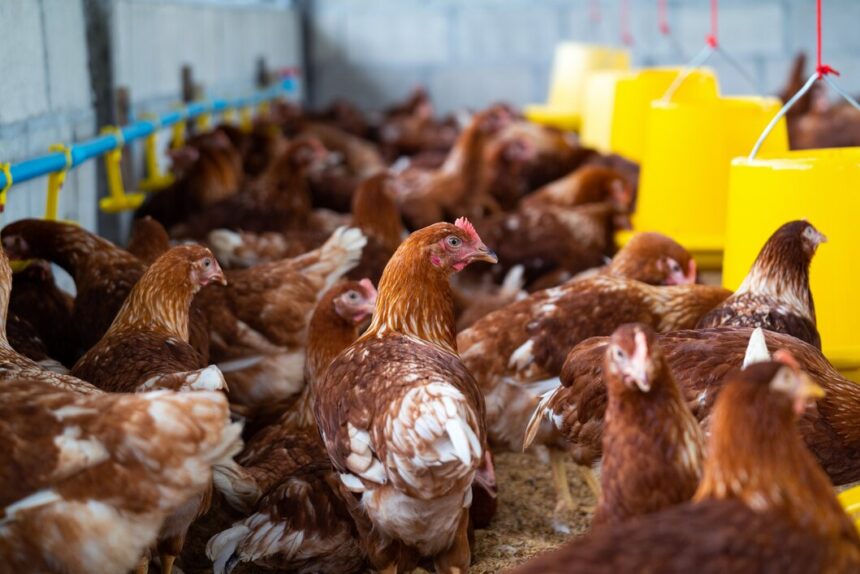Starting a small poultry farm can be a profitable venture for South African farmers looking to diversify their income streams. With the growing demand for poultry products, both locally and globally, entering the poultry farming industry can offer steady returns and a sustainable business model. Here is a step-by-step guide on how to set up and manage a small poultry farm successfully.
1. Understand the Basics of Poultry Farming
Before investing in a poultry farm, it’s crucial to understand the industry’s fundamentals, including:
- Types of Poultry: Decide whether you want to raise broilers (for meat), layers (for eggs), or dual-purpose birds. Each type requires different management practices and has varying profit margins.
- Market Research: Study the demand for poultry products in your area and identify your potential customers, such as local markets, restaurants, or individual consumers.
2. Create a Business Plan
A solid business plan will help you outline your goals, budget, and timeline for starting the farm. It should include:
- Initial Costs: Consider expenses like land preparation, housing, feed, chicks, equipment, and labor.
- Operational Plan: Detail daily farm activities, including feeding, cleaning, vaccination schedules, and marketing strategies.
- Revenue Projections: Estimate how many chickens you need to sell to break even and generate profit.
3. Choose a Suitable Location
Select a location that has the following attributes:
- Space and Layout: Ensure there is adequate space for chicken coops and outdoor areas, with room for future expansion.
- Accessibility: The farm should be easily accessible for transport, supply deliveries, and market access.
- Water Supply: Reliable water is essential for keeping chickens hydrated and maintaining hygiene.
4. Build Proper Housing
Construct poultry housing that is safe, spacious, and ventilated to promote healthy growth:
- Design: Coops should be designed to keep chickens safe from predators and extreme weather conditions while allowing ample airflow.
- Space Requirements: Ensure each bird has enough space to move comfortably. Overcrowding can lead to stress, disease, and lower productivity.
- Litter: Use materials such as wood shavings or straw to create a clean and absorbent litter floor.
5. Select High-Quality Chicks
Purchase chicks from a reputable hatchery to guarantee healthy, disease-free birds. Quality chicks will have higher survival rates and better growth performance. Check that the hatchery adheres to strict health and breeding standards.
6. Provide Nutritious Feed
Nutrition plays a vital role in poultry health and productivity:
- Starter Feed: For chicks, a nutrient-rich starter feed should be provided for the first few weeks to support growth.
- Grower Feed: After the starter period, switch to grower feed until the chickens reach market weight.
- Layer Feed: If raising layers, transition to layer feed once they begin producing eggs to ensure they receive the right minerals for strong shells and high egg production.
7. Implement Biosecurity Measures
Maintaining biosecurity is essential to prevent the spread of diseases:
- Limit Farm Access: Restrict access to the farm to reduce the risk of introducing diseases from outside sources.
- Hygiene Practices: Regularly clean and disinfect coops, feeding equipment, and water dispensers.
- Vaccinations: Adhere to a vaccination schedule to protect against common poultry diseases such as Newcastle disease and avian influenza.
8. Monitor and Manage Health
Regularly check the flock for signs of illness or stress, such as lethargy, feather loss, or changes in eating habits. Quick action should be taken if any health issues arise:
- Quarantine: Isolate sick birds to prevent the spread of disease.
- Veterinary Support: Establish a relationship with a local veterinarian experienced in poultry to assist with health management.
9. Maintain Proper Lighting
Lighting is especially important for layers, as it affects egg production:
- Natural and Artificial Light: Use a combination of natural sunlight and artificial lighting to maintain a consistent light schedule, which promotes egg-laying.
- Lighting Duration: Ensure layers receive approximately 14–16 hours of light daily for optimal production.
10. Manage Waste Properly
Poultry farming generates a significant amount of waste that needs to be managed responsibly:
- Composting: Turn chicken manure into compost for use as a natural fertilizer on your farm or sell it to other farmers.
- Waste Disposal: Ensure waste is disposed of far from living areas to prevent odors and the spread of bacteria.
11. Develop a Marketing Strategy
Plan how to market and sell your poultry products:
- Local Market Sales: Sell directly at farmers’ markets or to small retailers in your area.
- Supply Contracts: Partner with restaurants, grocery stores, or wholesalers to secure long-term contracts.
- Online Presence: Utilize social media and online platforms to reach a wider customer base and provide delivery options.
Common Challenges and Solutions
- Disease Outbreaks: Regular health checks and vaccination programs can mitigate the risk of disease.
- Feed Costs: Consider supplementing commercial feed with home-grown grains or food scraps where feasible to reduce costs.
- Seasonal Demand: Plan your production cycles to align with peak demand periods, such as holidays and festive seasons.
Starting a small poultry farm in South Africa can be a rewarding venture with the right approach and knowledge. By following these steps, farmers can build a foundation for a successful poultry business that is both profitable and sustainable. With proper planning, commitment to quality, and ongoing learning, farmers can establish a thriving operation that meets the growing demand for poultry products.







